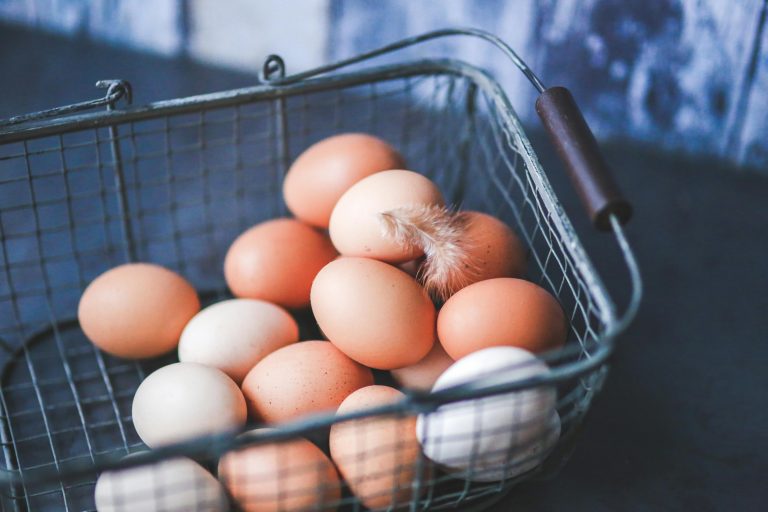Big or small, the humble egg is a cooking staple in the kitchen. In this guide, we discuss quail eggs, chicken eggs and duck eggs and give you some easy ideas of what to cook with each of these eggs. We also show you how to test if eggs are still fresh.
EVERY KITCHEN NEEDS THIS: The only quantity conversion chart you will ever need
Quail eggs
Quail eggs are considered a delicacy in many countries and are often eaten raw in Japanese dishes, as well as being included in the well-known bento lunches. There are several breeds of quail, with the eggs varying slightly in shape or colour. Quail eggs are usually small and oval-shaped, with a speckled outer shell that can vary from dark brown to blue or white.
Cooking with quail eggs is delicious but can be challenging as the shell is extremely thin and can be difficult to crack without damaging or splitting the yolk.
Quail eggs are a good source of protein and contain the same cholesterol levels as a medium chicken egg.
TRY THIS: Sherry peas with quail eggs and ham
Easy ideas with quail eggs:
- The spicy flavour of chorizo sausage works well with the delicate but richly flavoured quail egg. Thinly slice chorizo, fry until slightly crisp, and top with a fried egg. Season with freshly ground black pepper.
- Soft-boil quail eggs (two minutes for soft-boiled, three minutes for hard) and serve with a dusting of spicy dukkah.
- For an easy canapé idea, soft-boil quail eggs and serve in a spoon on a bed of shredded cucumber ribbons. Top with crumbled, crispy pancetta and plenty of freshly cracked black pepper.
Chicken eggs
Chicken eggs have long been a kitchen staple. Used in savoury foods, they are an essential ingredient in baking too.
Chicken eggs vary greatly in size – from jumbo to large, medium to small. The colour of the shell is not determined by the hen’s diet, but rather by its particular breed. Brown eggs are more commonly seen on supermarket shelves or at farmers’ markets, although white-shelled eggs are extremely popular in the US. They’re also a much better option for painting Easter eggs.
Free-range eggs are always best. The yolks are often a beautiful sunny yellow, with a clear and shiny albumen. Chicken eggs are an excellent source of Vitamin D.
TRY THIS: Soft-boiled eggs with prosciutto-wrapped toast soldiers and porcini butter
Easy ideas with chicken eggs:
- Omelettes are always great for using up a variety of leftovers. For a Spanish variation, fill an omelette with a few chopped sun-dried tomatoes, sautéed rosemary potatoes, roasted garlic and a sprinkling of Parmesan cheese.
- Soft-poached eggs are delicious served with blanched asparagus and extra-crispy bacon.
How to test if eggs are still fresh:
Place a whole egg in a bowl of water – if the egg sinks and lies on its side, it is fresh. If the egg floats, it is past its sell-by date.
Duck eggs
Duck eggs aren’t always readily available, but if you are able to find them, they don’t call for major cooking techniques.
Tips for cooking with duck eggs:
- The yolks of duck eggs have more fat and the whites more protein than those of chicken eggs, so gentler cooking is required.
- Whipping duck egg whites can take more time due to the amount of protein, but once they reach the ‘foam stage’ they whip up easily.
- Duck eggs can freely replace chicken eggs in baking. Due to the protein in the egg whites they whip up with plenty of volume.
- Duck eggs work well in cakes that require whipped egg whites as a raising agent.
ALSO SEE: A few of the best (and easiest) ways to peel boiled eggs
Photograph by Graeme Wylie


